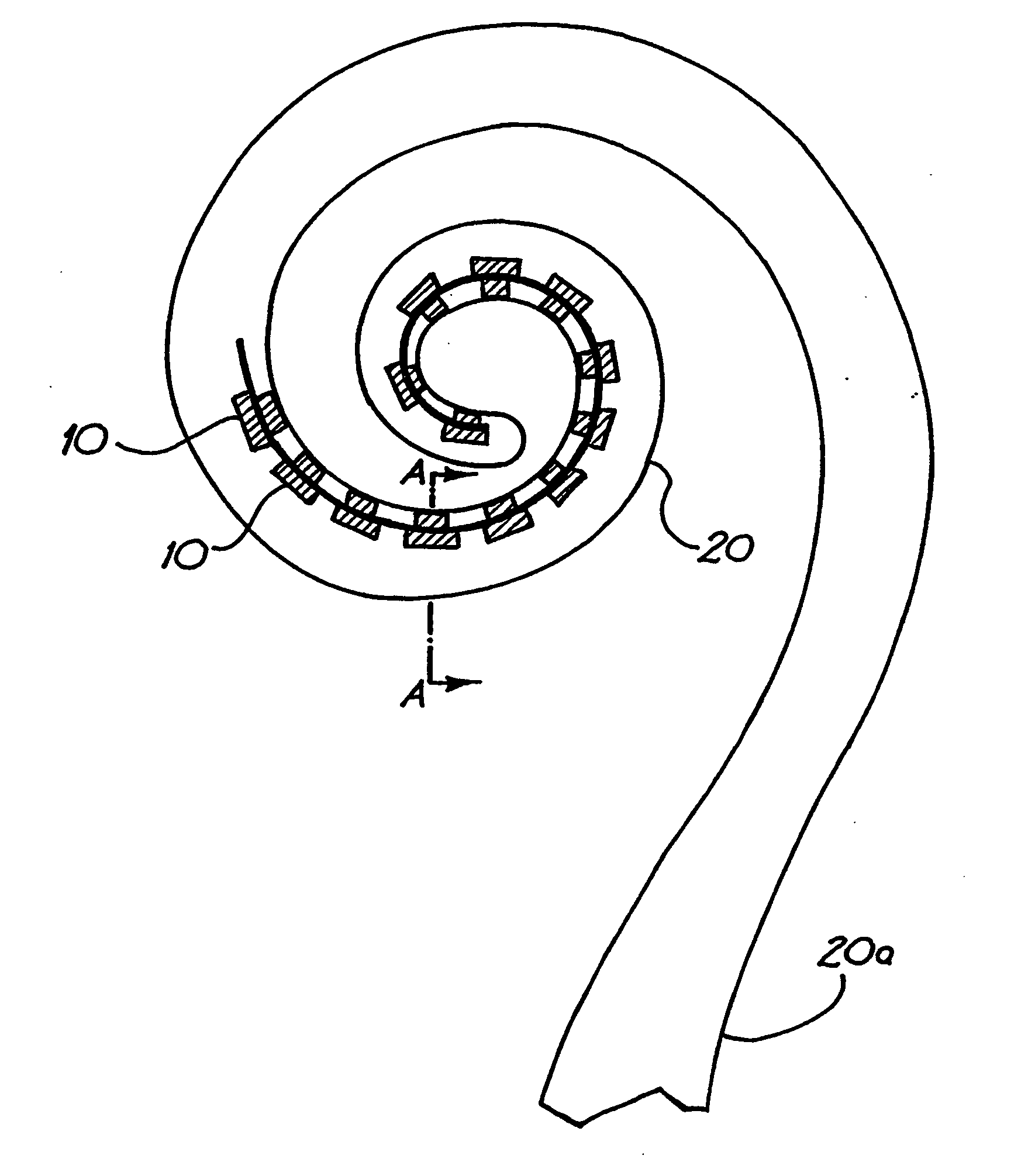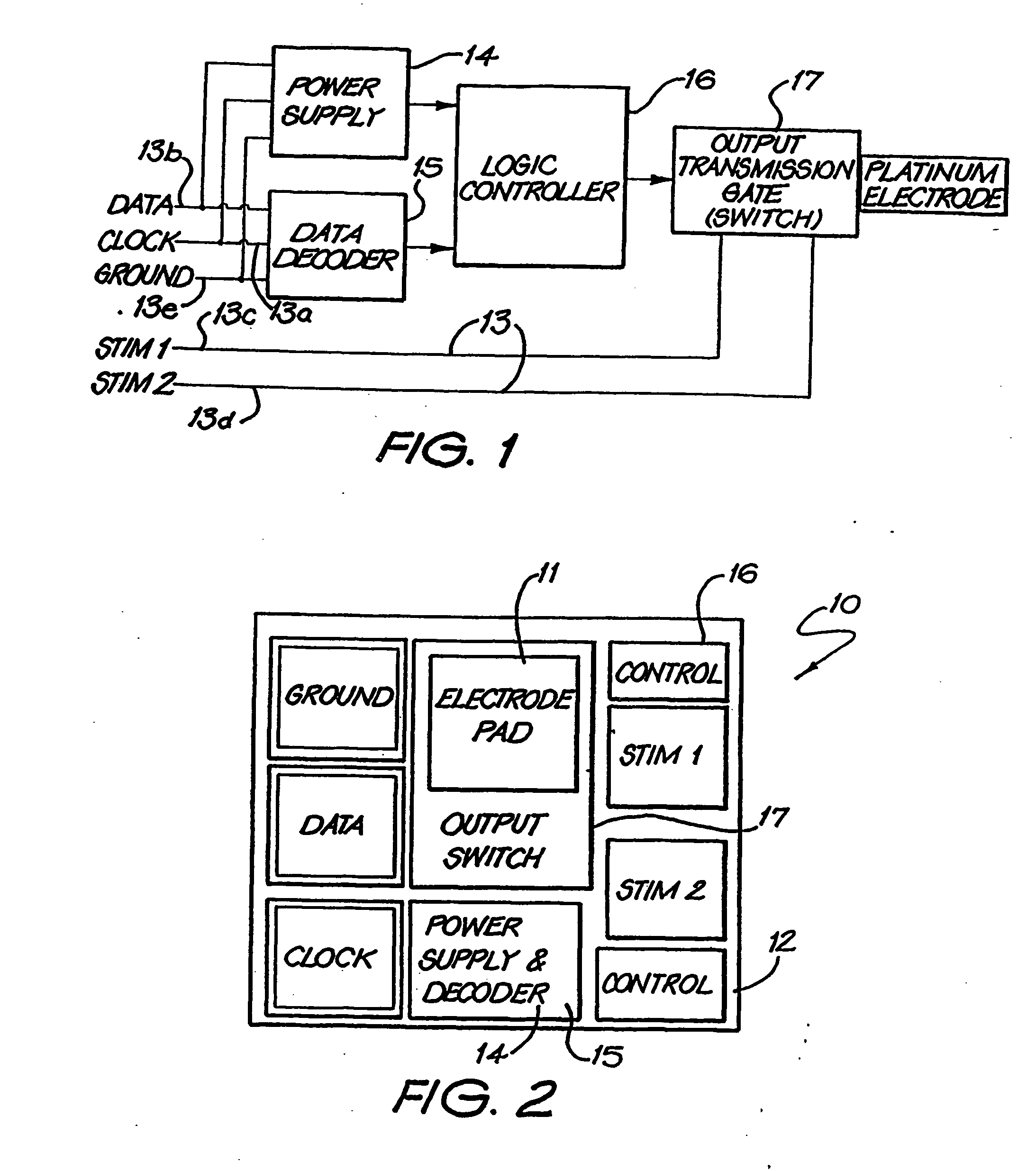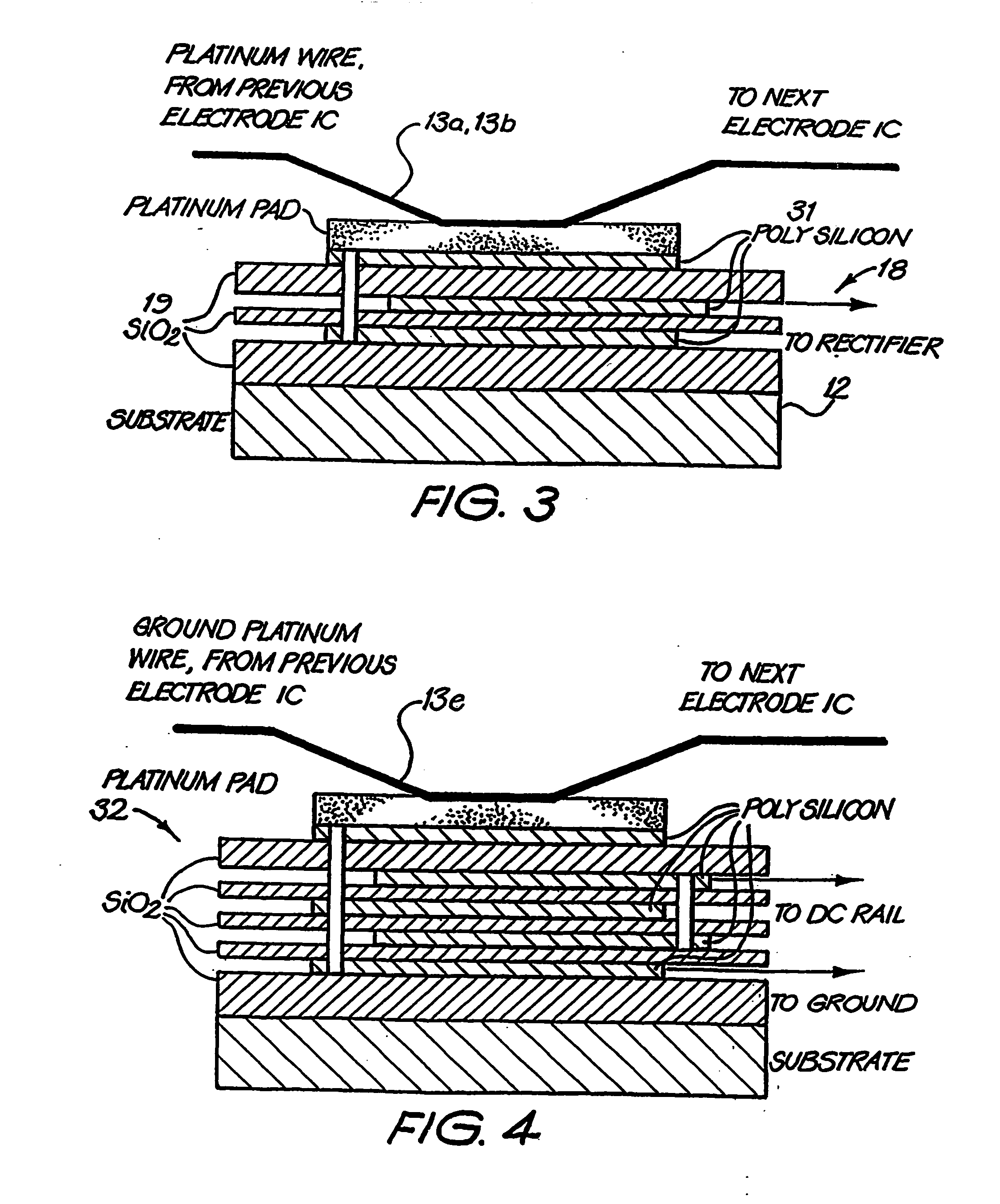Multi-electrode cochlear implant system with distributed electronics
a cochlear implant and distributed electronics technology, applied in the field of tissue stimulation prosthesis, can solve the problems of increasing the number of wires in conjunction with an increase in the number of electrodes, limiting the maximum dimensions of the cochlea, and limiting the maximum stiffness of the array, so as to ensure the long-term charge balance of the system
- Summary
- Abstract
- Description
- Claims
- Application Information
AI Technical Summary
Benefits of technology
Problems solved by technology
Method used
Image
Examples
Embodiment Construction
[0062] While it is to be understood that the present invention has wider application, the invention will be hereinafter described with reference to its application in a cochlear implant.
[0063] Before describing the features of the present invention, it is appropriate to briefly describe the construction of one type of known cochlear implant system with reference to FIG. 11.
[0064] Known cochlear implants typically consist of two main components, an external component including a speech processor 29, and an internal component including an implanted receiver and stimulator unit 22. The external component includes a microphone 27. The speech processor 29 is, in this illustration, constructed and arranged so that it can fit behind the outer ear 7. Alternative versions may be worn on the body or be totally implantable. In the depicted arrangement, a transmitter coil 24 receives signals from the speech processor 29 which in turn transmits electrical signals to the implanted unit 22 via a...
PUM
 Login to View More
Login to View More Abstract
Description
Claims
Application Information
 Login to View More
Login to View More - R&D
- Intellectual Property
- Life Sciences
- Materials
- Tech Scout
- Unparalleled Data Quality
- Higher Quality Content
- 60% Fewer Hallucinations
Browse by: Latest US Patents, China's latest patents, Technical Efficacy Thesaurus, Application Domain, Technology Topic, Popular Technical Reports.
© 2025 PatSnap. All rights reserved.Legal|Privacy policy|Modern Slavery Act Transparency Statement|Sitemap|About US| Contact US: help@patsnap.com



